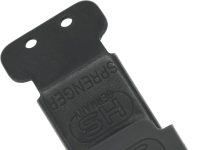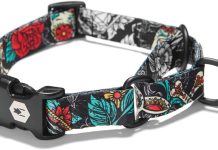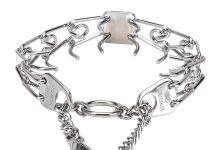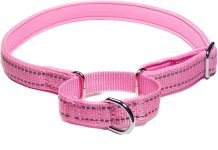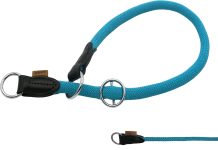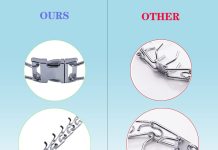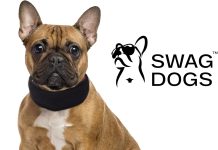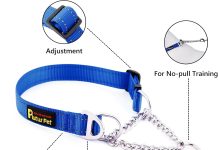Looking for the perfect harness for your four-legged friend with short legs? Well, look no further! In this article, we will guide you through the process of finding the ideal harness that not only fits comfortably but also provides the necessary support for your pup. We understand the unique challenges that come with dressing up a dog with short legs, so we have compiled a list of important factors to consider, along with some expert recommendations. So, if you’re ready to help your furry companion strut their stuff with confidence and ease, let’s get started on this exciting journey together!
Understand Your Dog’s Needs
When it comes to finding the right harness for your dog with short legs, it is crucial to understand their unique needs. By considering factors such as breed, body shape, size, weight, health concerns, and walking style, you can make an informed decision that prioritizes your dog’s comfort and well-being.
Table of Contents
Consider the Breed and Body Shape
Different dog breeds have various body shapes and proportions that can impact the fit and suitability of a harness. For dogs with short legs, such as Dachshunds or Corgis, choosing a harness that accommodates their low and long bodies is essential. Look for harnesses that have adjustable straps around the chest and abdomen, allowing you to customize the fit to your dog’s specific body shape.
Assess the Size and Weight
The size and weight of your dog should also influence the choice of harness. Ensure that the harness you select is appropriate for the dimensions of your dog, taking into account their chest and neck measurements. Avoid harnesses that are too tight or too loose, as they can cause discomfort or restrict movement.
Take into Account any Health Concerns
If your dog has any health concerns, such as a sensitive back or arthritis, it is crucial to consider these factors when choosing a harness. Opt for a harness that provides proper support and avoids putting pressure on vulnerable areas. Consulting with your veterinarian can provide valuable insight into any specific requirements your dog may have.
Determine Their Walking Style
Understanding your dog’s walking style is another vital aspect in selecting the right harness. Some dogs may pull or lunge during walks, while others may have a more relaxed and controlled gait. Consider whether your dog requires a no-pull harness with additional control features or a simpler harness that focuses on comfort and ease of movement.
Choose the Right Type of Harness
Once you have a clear understanding of your dog’s specific needs, it’s time to explore the various types of harnesses available. Each type offers specific features and benefits, catering to different dog breeds, sizes, and walking preferences.
Front-Clip Harness
A front-clip harness is designed with a leash attachment point on the front of the dog’s chest. This type of harness is ideal for dogs that tend to pull, as the front attachment redirects their momentum, discouraging pulling behavior. It can provide more control and prevent strain on your dog’s neck.
Back-Clip Harness
Back-clip harnesses have a leash attachment point on the back, along the dog’s upper spine. This type of harness is suitable for well-behaved dogs with good leash manners and proper leash training. Back-clip harnesses offer a comfortable and simple design, allowing dogs more freedom of movement.
Step-In Harness
A step-in harness is a popular choice for small dogs with short legs. This harness style features two leg holes and a strap that the dog steps into. It is easy to put on and take off, making it convenient for dogs that may be a bit squirmy during the harnessing process.
Vest Harness
Vest harnesses have a wrap-around design that snugly fits around your dog’s body. They typically have adjustable straps and multiple leash attachment points, providing versatility and a secure fit. Vest harnesses are often padded for added comfort, making them suitable for dogs with short legs who may be prone to chafing or discomfort.
No-Pull Harness
If your dog tends to pull during walks, a no-pull harness may be the right choice. These harnesses usually have a front attachment point and additional control features, such as a chest strap that tightens when the dog pulls. The design discourages pulling and redirects the dog’s attention back to the owner.
Padded Harness
For dogs with short legs, ensuring a comfortable fit is crucial. A padded harness can offer extra cushioning to prevent any discomfort or rubbing. Look for harnesses with padding on the chest, abdomen, and straps, as this can provide a cozy experience for your furry friend.
Adjustable Harness
An adjustable harness is a great option for dogs that are still growing or have fluctuating weight. These harnesses allow you to easily customize the fit as your dog’s body changes over time, ensuring a secure and comfortable fit.
Harness with Lift Handle
If your dog has mobility issues or difficulty navigating obstacles, a harness with a lift handle can be beneficial. The handle allows you to assist your dog by providing support or helping them over obstacles, making walks safer and more manageable.
Custom or Specialized Harness
In some cases, your dog’s unique needs may require a custom or specialized harness. These can be tailored to accommodate any specific health concerns, body shape, or walking style. Consulting with a professional, such as a dog trainer or veterinarian, can help you find the right solution for your dog’s needs.
Consult a Professional
If you’re unsure about which type of harness would be best for your dog with short legs, don’t hesitate to consult a professional, such as a dog trainer or veterinarian. They can offer valuable advice and guidance based on their expertise and knowledge of your dog’s individual circumstances.
Consider Specific Features
While the type of harness is important, considering specific features can further enhance your dog’s comfort and safety during walks. By paying attention to measurements and fit, length of harness straps, padding and comfort, durability and quality of materials, ease of putting on and taking off, visibility and reflective elements, leash attachment points, additional attachments and accessories, washability and maintenance, as well as cost and budget, you can narrow down your choices and find the perfect harness for your dog.
Measurements and Fit
Proper measurements and fit are crucial when selecting a harness for your dog with short legs. Ensure that the harness you choose is suitable for your dog’s specific measurements, taking into account their chest, neck, and abdomen circumference. Refer to the manufacturer’s sizing guide and measure your dog accurately to avoid any sizing issues.
Length of Harness Straps
The length of harness straps is an important factor to consider, especially for dogs with short legs. Straps that are too long may lead to the harness becoming loose or tangled, potentially causing discomfort or safety hazards. Look for harnesses with adjustable straps that can be customized to your dog’s unique measurements.
Padding and Comfort
Comfort is key when it comes to your dog’s harness. Look for harnesses that have sufficient padding on the chest, abdomen, and straps to prevent chafing or rubbing. This is especially important for dogs with short legs, as their bodies may come into contact with the harness more frequently.
Durability and Quality of Materials
Investing in a durable and high-quality harness is essential for long-term use. Look for harnesses made from sturdy materials, such as nylon or polyester, that can withstand the wear and tear of regular walks. Avoid harnesses that may easily fray or break, as this can compromise your dog’s safety.
Ease of Putting On and Taking Off
A harness should be easy to put on and take off, allowing for hassle-free walks. Look for harnesses with adjustable straps, quick-release buckles, or step-in designs that simplify the harnessing process. This can be particularly beneficial when dealing with dogs with short legs, as they may be more wriggly or sensitive to being restrained.
Visibility and Reflective Elements
Safety should always be a top priority during walks, especially in low-light conditions or at night. Look for harnesses with reflective elements or bright colors that enhance visibility. This ensures that both you and your dog are easily seen by motorists or pedestrians, reducing the risk of accidents.
Leash Attachment Points
Consider whether you prefer a harness with a single leash attachment point or multiple attachment options. Depending on your dog’s walking style and behavior, you may find either option more suitable. Some harnesses have both front and back attachment points, offering versatility and control.
Additional Attachments and Accessories
Certain harnesses come with additional attachments or accessories that can enhance your walking experience. These can include pockets for carrying small items, loops for attaching accessories such as poop bags or water bottles, or even built-in handles for extra control. Assess your specific needs and preferences to determine which additional features would be beneficial for you and your dog.
Washability and Maintenance
Regular cleaning and maintenance of your dog’s harness are essential to ensure hygiene and longevity. Look for harnesses that are machine washable or easy to clean, as this can save you time and effort in the long run.
Cost and Budget
Consider your budget when choosing a harness for your dog with short legs. While it’s important to invest in a quality harness that meets your dog’s needs, it’s also essential to find one that fits within your budget. Compare prices and features of different harnesses to find the best balance between quality and affordability.
Research and Read Reviews
Before making a final decision, it’s essential to conduct thorough research and read reviews from other pet owners. By gathering information from online pet stores and retailers, specialized dog equipment websites, blogs, and dog owner forums, you can gain insights into the experiences of others who have purchased harnesses for dogs with short legs. Pay attention to both the positive and negative reviews, as this can give you a well-rounded understanding of each harness’s pros and cons.
Consult with Pet Professionals or Veterinarians
When in doubt, reaching out to pet professionals or veterinarians can provide valuable guidance and recommendations. They have the expertise and knowledge to understand your dog’s specific needs and can offer personalized advice. Whether it’s speaking with a dog trainer, discussing with a veterinarian, seeking advice from other experienced dog owners, attending dog shows or events, or joining online dog owner communities, consulting with professionals and fellow dog lovers can help you make an informed decision.
Try on and Test the Harness
To truly determine if a harness is suitable for your dog with short legs, it’s important to try it on and assess its fit and functionality. Visit local pet stores that allow dogs to try on harnesses or ask for recommendations and assistance from knowledgeable staff. Ensure that the harness fits properly, doesn’t cause any discomfort, and allows for freedom of movement. Observe your dog’s reaction and behavior while wearing the harness to gauge their comfort level.
Consider Adjustability and Growth Potential
When choosing a harness for a dog with short legs, it’s important to consider adjustability and growth potential. Look for harnesses with adjustable straps that can be tailored to your dog’s unique measurements. This is particularly crucial for puppies and young dogs who are still growing and require a harness that can adapt over time.
Take Safety Precautions
Always prioritize your dog’s safety when selecting a harness. Avoid harnesses that have any choking hazards, such as loose straps or excessive hardware. Ensure that the harness has proper visibility features, such as reflective elements, to enhance visibility during walks. Regularly check the harness for any signs of wear and tear to prevent accidents or malfunctions. Additionally, it’s important not to leave the harness on an unattended dog, as it can become tangled or potentially pose a choking risk.
Ask for Recommendations and Seek Second Opinions
Don’t be afraid to reach out to other dog owners and professionals when seeking recommendations or second opinions. Getting advice from individuals who have firsthand experience with dogs with short legs can provide invaluable insights and help you make a more informed decision. Whether it’s consulting other dog owners, asking for advice from dog professionals, or joining online dog communities, seeking the input of others can expand your knowledge and understanding.
Prepare for Adjustments and Training
Once you have chosen the right harness for your dog with short legs, it’s time to prepare for the adjustment period and incorporate training if necessary. Gradually introduce your dog to the harness, allowing them to acclimate to the new sensations and restrictions. Use positive reinforcement and rewards to create a positive association with wearing the harness. Practice walking and exercising with the harness, monitoring your dog’s comfort and adjusting the fit as needed. Regularly check the fit and make any necessary modifications to ensure optimal comfort and safety for your furry friend.
Finding a good harness for a dog with short legs requires careful consideration of various factors, from understanding your dog’s needs to selecting the right type of harness, considering specific features, researching and reading reviews, consulting with professionals, testing the harness, and prioritizing safety. By taking the time to assess your dog’s individual requirements and exploring the options available, you can make a well-informed decision that enhances your dog’s comfort, safety, and enjoyment during walks. Remember to always prioritize your dog’s well-being and consult with experts if you have any uncertainties or questions along the way. Happy walking!


